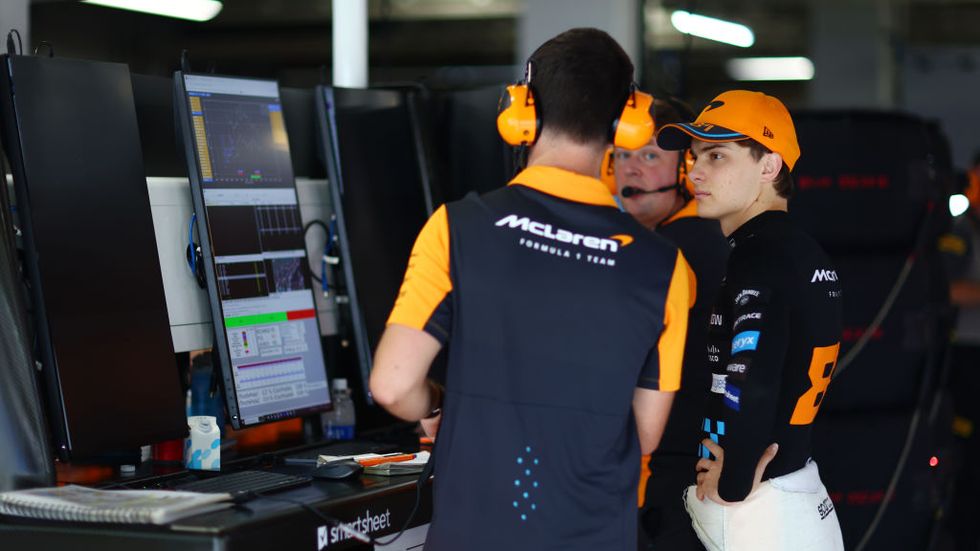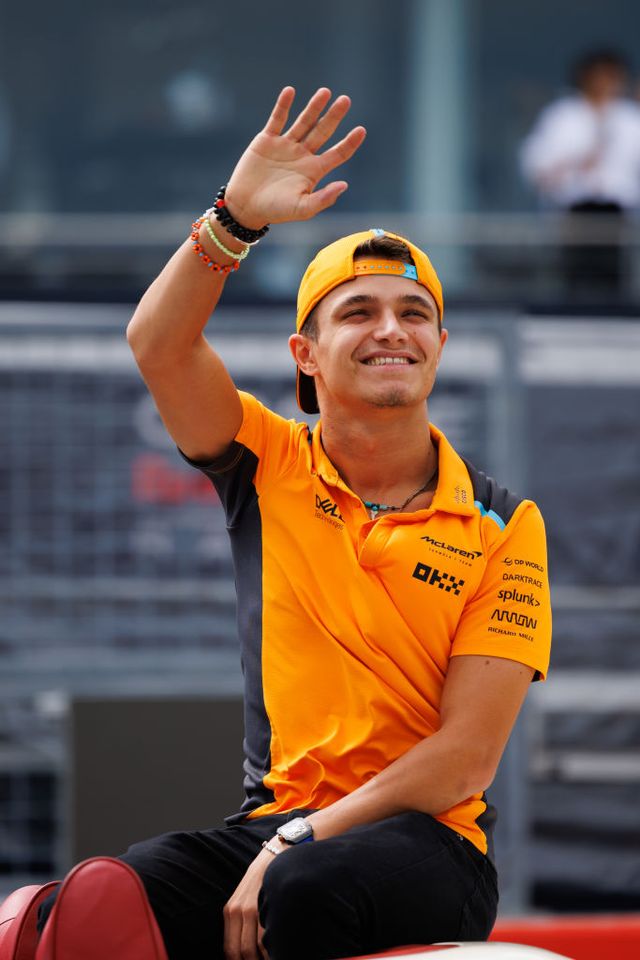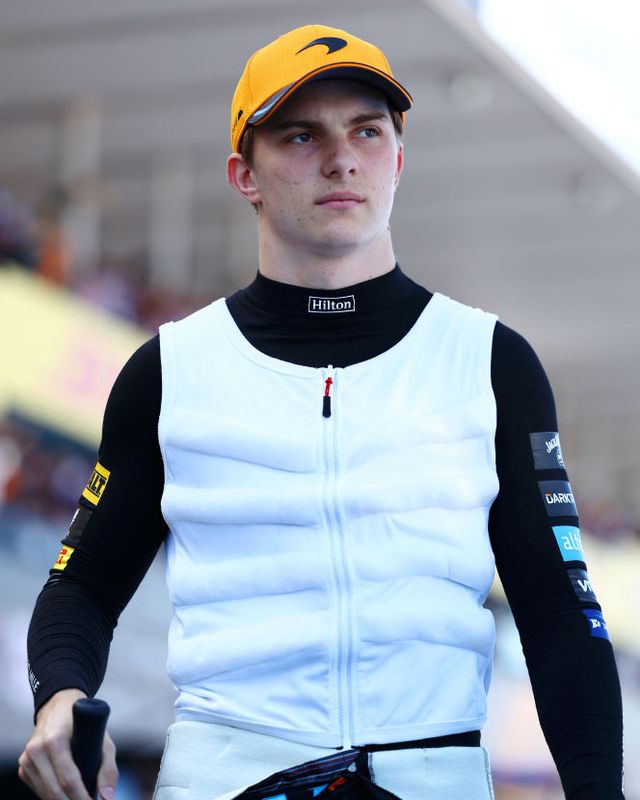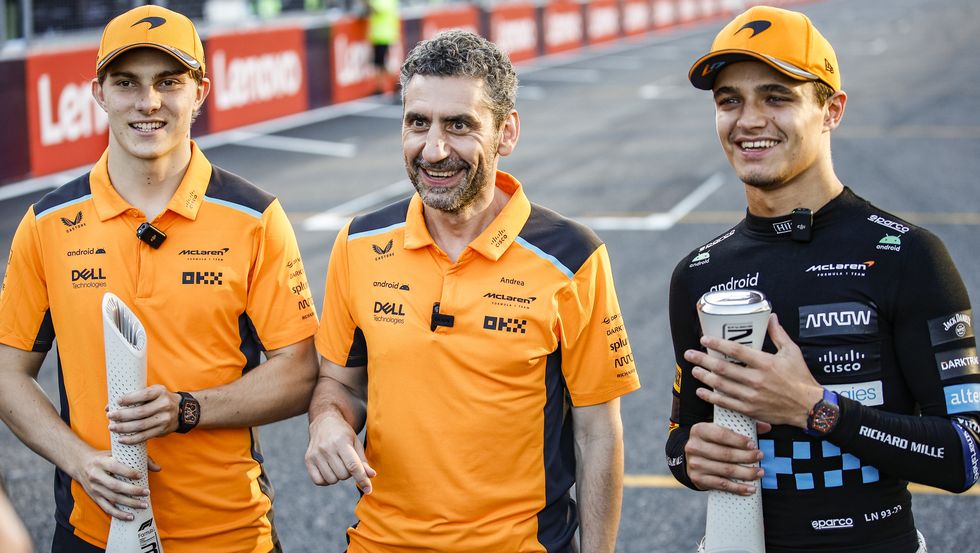- McLaren was last in the Formula 1 championship after a chastening opening couple of rounds in which it conceded it missed targets with its MCL60 race car.
- But after a mid-season leap in performance, it is now a regular podium finisher and is still improving.
- How has it undertaken such a step?
Across the opening eight races McLaren scored only 17 points in the Formula 1 Constructors’ Standings, leaving it adrift in sixth place out of 10 teams in the standings, but in the eight events since its Austria upgrade was introduced it has accrued 155.
Over that eight-race time frame, McLaren has been the third-highest scoring ream, picking up just eight fewer points than Ferrari. Meanwhile in the Drivers’ Championship standings, only runaway champion Max Verstappen has scored more points than McLaren ace Lando Norris in that time.
Mercedes and Ferrari remain out of reach for fifth-place McLaren overall, but the fourth spot currently held by Aston Martin is very much attainable, with the gap now only 49 points and shrinking rapidly with each passing event.
- Points in first eight F1 races of 2023: Mercedes 167, Aston Martin 154, Ferrari 122, McLaren 17
- Points in last eight events: Ferrari 163, McLaren 155, Mercedes 138, Aston Martin 67
How has it carried out such a turnaround?
It stems back to late 2022, when McLaren realized the development potential of the launch-spec MCL60 it was planning was limited, as much it conceded at the actual unveiling of the car in February. New team principal Andrea Stella warned that its early results were likely going to be lean, and targeted having the fourth-fastest car by season’s end, proclamations that had many of the assembled media in the room doubting such a situation. After all, it felt a little bit of rinse and repeat.
Humble pie, well and truly consumed.
McLaren restructured its technical department, ousting technical director James Key, and splitting his role into a revised set-up, under the leadership of Peter Prodromou and Neil Houdley. Early components began filtering through at the fourth round in Azerbaijan, in April, but the substantially revised package—the first under the new leadership—was introduced in Austria, with further parts arriving in Britain, and it transformed McLaren’s prospects. Another sizeable update that arrived in Singapore complemented those changes.
“The main layout change internally was done for the Austria upgrade, as we needed to change a bit the layout of radiators, pipe works, and I think the pneumatic bottle, so there was a significant amount of redesign internally,” said Stella. The MCL60’s sidepods were heavily modified with alterations also made to the floor and the diffuser.
The front wing was another major area with modifications as McLaren better managed the gaps between the flaps and the endplate in conjunction with the shaping of the aerofoil. This assists with generating a greater outwash effect.
“So, even if this generation of cars inherently reduces out washing massively compared to the previous generation of cars teams are still trying to pursue this objective,” Stella explained.
Teams are naturally secretive about the design of their floors, which under ground effect regulations are a key area of generating crucial downforce. At its vast Singapore update McLaren reintroduced the edge wing on its floor, along with updated fences, which was the major talking point of a package that included sidepod inlet and mirror remounting, revised halo geometry, a reshaped engine cover, along with modified brake ducts, tweaked rear suspension, and further revisions to the front and rear wing endplates.
“On the floor, you can see, this wing has been introduced,” said Stella while next to the MCL60. Actually, this closes a bit of a loop, as in 2022 our shakedown car had this kind of wing, which was adopted by some competitors, but then we realised we needed to go all the way through a journey of removing this; for some time we had the skate under the car, but it was clear some other cars had removed the skate at the start of the season, so we did too.
“This area of the car gives a lot of performance, the detailed work under the car is one of the most sophisticated—and from an engineering point of view fascinating—I think I’ve ever seen.”
McLaren still recognizes the need to make gains in low-speed corners, and to tackle its relatively draggy car, with its performances along the straights sub-par. It had its weakest weekends since the Austria upgrade at Spa-Francorchamps and Monza—as its intense development prevented it from producing the necessary low-drag package—while at Suzuka is MCL60 was lacking through the hairpin and kerb-hungry final chicane.
“Another area where we are working is actually creating the right arrangements of beam wings so that we can achieve the right level of drag without having to reduce the size of the upper wing too much,” said Stella. “This beam wing here (in Japan) is relatively off-loaded compared to some of the beam wings we were having at the start of the season.”
Stella has also regularly cautioned that McLaren cannot get carried away by its in-season progress—pointing out that the MCL60 remains behind Red Bull’s RB19 in all areas—but is encouraged that new components have led to desired gains and, usually, a compliant car that aids driver confidence. These have been some of the final parts produced in Toyota’s wind tunnel in Cologne, with McLaren’s 2024 project being developed in its bespoke new wind tunnel, which became operational in June. The early runs in the new wind tunnel are encouraging, Stella says, from a correlation perspective.
McLaren has heavily revised and enhanced its MCL60 but also crucial is having two drivers that can extract its performance.
Lando Norris remains hot property but Oscar Piastri’s recent renewal through 2026 spoke volumes of the commitment that both parties have made. Few doubted Piastri’s ability to convert junior potential into Formula 1 reality but as McLaren has developed through 2023 so too has the Australian youngster.
Team bosses are understandably glowing about talents under their wing but Stella was particularly effusive about Piastri’s off-track qualities.
“What happened in the early days of the collaboration with Oscar is that we could see that what he achieved in the junior categories had good reasons for that to happen,” Stella explained. “We could see this in the natural speed, we even saw it in the first day of the simulator in the way he was assessing his own performance, saying. ‘This is where I am. This is where I need to improve.’ It was matching so well with what we could see from the data. That was quite impressive. That’s where I thought, ‘It’s just a gift’, to some extent. His self-awareness in relation to speed, in relation to how to go and grab this opportunity—this became apparent then at the test and then race by race.
“Then we saw the qualities at the attitudinal level, and these qualities have to do with being able to continuously improve. You may be as talented as I’m saying, but there are a lot of people that were talented but didn’t lead anywhere because there was no attitude to continuous improvements. I think we have really good examples now on the grid of drivers that can keep being extremely competitive at ages that we didn’t think that will be obvious because of continuous improvements—just attitude to continuous improvements.
“Then we have the person behind the driver. For us it was important to make sure that the person that we keep on board is a person that not only fits our culture but will contribute to establishing the culture even more and potentially adding to the culture, adding to the values and the behaviours that make us become a team of mates. And in this sense Oscar, I have to say, from just a personal point of view, if he wasn’t a Formula 1 driver, I would appreciate him as a person.”
Stella praised Piastri’s team player role when he dutifully accepted McLaren’s decision to hand the heavily updated car to Norris first on two occasions, before Piastri received the components at the following round (Austria/Britain, and Singapore/Japan).
“In both times the conversations with Oscar were calm, rational and constructive conversations where it was easy for me to say, ‘I’m talking in the name of the team’ and it was easy for him to understand that,” said Stella. “Even if as a driver you always want to have the highest potential package, it definitely prevailed in his rational team-player approach in this conversation. At no point during the Singapore weekend did we have any reference to any annoyance, any comment like, ‘I’m here a little slower but obviously the other one has the new parts’. Not even indirectly. And this means that everyone listening, everyone looking at the person, gets something by example. That’s the fit with the culture.”
Piastri’s Suzuka podium meant he became the first rookie in six years to score a top-three finish in Formula 1, but such is his big picture view that, while content at the achievement, there was a recognition that he was firmly beaten in race trim by Norris.
“It wasn’t my strongest Sunday,” said Piastri, who was unlucky not to score a maiden podium at Silverstone through Safety Car mis-timing.
“These high-deg races are probably the biggest thing I need to try and work on at the moment. I think it’s still quite fresh for me, obviously. In all the junior racing before this there are no races like this. So the only way you can learn from it is by just doing the races.”
Norris remains a fine benchmark for a rookie such as Piastri, the Briton having been embedded within McLaren since 2017, and honed his racecraft year-on-year since his debut in 2019.
“We’re pushing, we’re getting there,” said Norris. “The progress we’ve made is pretty outstanding.”
McLaren and fellow Mercedes customer Aston Martin, which remains ahead in the standings, have had almost opposing seasons, while McLaren’s points tally compared to Ferrari and Mercedes in this second phase of the campaign must provide encouragement for 2024, even with Red Bull (or Verstappen) streaks ahead.
But McLaren is in a position where its technical leadership is thriving, new components are working, and morale is growing. Stella has emerged as an assured and calm team boss during his first season in the job while Formula 1’s youngest full-time driver lineup remain on an upwards trajectory. The picture is looking much rosier than it was just four months ago.
Read the full article here






